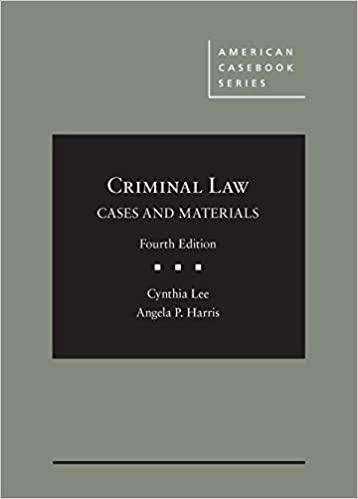Question
Change can be either driven or restrained by forces, i.e. persons, habits, customs, attitudes. In a planning session, this can be visualised by a Force
Change can be either driven or restrained by forces, i.e. persons, habits, customs, attitudes. In a planning session, this can be visualised by a Force Field Diagram. Using three columns, list planned change in the middle column, the driving forces
in the left one, the opposing forces in the right one. Check whether the forces listed are appropriate and whether they can they be changed. Decide which ones are critical, and allocate a score to each (from 1 being extremely weak to 10 being
extremely strong). Decide as well whether any of the forces are actually amenable to change. Now, progress can occur if an opposing force can be reduced, and/or if a driving force can be strengthened. A force field analysis, if well carried out, will reveal opponents and allies, and suggest possible corrective action.
31 What are the criteria for knowing the prognosis of cirrhosis (Child's criteria)?
32 What is the recommended treatment for cirrhosis of the liver?
33 Is there any role for liver dialysis in hepatic
encephalopathy?
34 I have been asked to write essay on 'caring' for a client who
has been an alcohol abuser for more than 10 years and is in the 'recovery'
stage. I am aware there are many different factors, such as length of abuse,
amount consumed, age, gender etc. . . . My question is: how long will it take
the liver to 'recover' or to return to normal after stopping drinking? I am
especially interested in blood tests, fatty deposits and gammaglutamyl
transpeptidases (-GTs).
35 Can patients with liver cell failure suffer from myocardial
infarction?
36 What is the definition of liver cell failure (decompensated
liver disease)?
37 Flapping tremors: why do we get flapping tremors and no other
types of tremor in liver failure? What is their mechanism and in which other
conditions do they occur?
38 In a patient with liver cell failure, can there be resting
and action tremors or parkinsonian features if it is confirmed that the patient
does not have Wilson's disease?
39 Does the absence of any cirrhosis of the liver, together with
normal liver enzymes, in a 9-year-old boy complaining of chorea of a 5-year
duration, exclude Wilson's disease?
40 Can Wilson's disease be excluded in a patient complaining of
movement disorder for over 2 years, when there is an absence of cirrhotic liver
change?
Step by Step Solution
There are 3 Steps involved in it
Step: 1

Get Instant Access to Expert-Tailored Solutions
See step-by-step solutions with expert insights and AI powered tools for academic success
Step: 2

Step: 3

Ace Your Homework with AI
Get the answers you need in no time with our AI-driven, step-by-step assistance
Get Started


